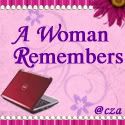**CONTRAST THE DIFFERENT DATABASE MODEL & DISCUSS THE MANAGEMENT ACT DBMS PERFORMS UPON DATA.
**Answer:
HierarchicalThe hierarchical data model organizes data in a tree structure. There is a hierarchy of parent and child data segments. This structure implies that a record can have repeating information, generally in the child data segments. To create links between record types, the hierarchical model uses Parent Child Relationships. These are a 1:N mapping between record types. This is done by using trees.
NetworkSome data were more naturally modeled with more than one parent per child. So, the network model permitted the modeling of many-to-many relationships in data. In 1971, the Conference on Data Systems Languages (CODASYL) formally defined the network model. The basic data modeling construct in the network model is the set construct. A set consists of an owner record type, a set name, and a member record type. A member record type can have that role in more than one set, hence the multiparent concept is supported. An owner record type can also be a member or owner in another set.
Relational(RDBMS - relational database management system) A database based on the relational model developed by E.F. Codd. A relational database allows the definition of data structures, storage and retrieval operations and integrity constraints. In such a database the data and relations between them are organised in tables. A table is a collection of records and each record in a table contains the same fields.
Object/RelationalObject/relational database management systems (ORDBMSs) add new object storage capabilities to the relational systems at the core of modern information systems. These new facilities integrate management of traditional fielded data, complex objects such as time-series and geospatial data and diverse binary media such as audio, video, images, and applets. By encapsulating methods with data structures, an ORDBMS server can execute comple x analytical and data manipulation operations to search and transform multimedia and other complex objects.
Object-OrientedObject DBMSs add database functionality to object programming languages. They bring much more than persistent storage of programming language objects. A major benefit of this approach is the unification of the application and database development into a seamless data model and language environment. As a result, applications require less code, use more natural data modeling, and code bases are easier to maintain. Object developers can write complete database applications with a modest amount of additional effort.This one-to-one mapping of object programming language objects to database objects has two benefits over other storage approaches: it provides higher performance management of objects, and it enables better management of the complex interrelationships between objects.
SemistructuredIn semistructured data model, the information that is normally associated with a schema is contained within the data, which is sometimes called ``self-describing''. In such database there is no clear separation between the data and the schema, and the degree to which it is structured depends on the application. In some forms of semistructured data there is no separate schema, in others it exists but only places loose constraints on the data. Semi-structured data is naturally modeled in terms of graphs which contain labels which give semantics to its underlying structure.
Semistructured data has recently emerged as an important topic of study for a variety of reasons. First, there are data sources such as the Web, which we would like to treat as databases but which cannot be constrained by a schema. Second, it may be desirable to have an extremely flexible format for data exchange between disparate databases. Third, even when dealing with structured data, it may be helpful to view it as semistructured for the purposes of browsing.
AssociativeThe associative model divides the real-world things about which data is to be recorded into two sorts:
Entities are things that have discrete, independent existence. An entity’s existence does not depend on any other thing. Associations are things whose existence depends on one or more other things, such that if any of those things ceases to exist, then the thing itself ceases to exist or becomes meaningless.
An associative database comprises two data structures:
1. A set of items, each of which has a unique identifier, a name and a type.
2. A set of links, each of which has a unique identifier, together with the unique identifiers of three other things, that represent the source source, verb and target of a fact that is recorded about the source in the database. Each of the three things identified by the source, verb and target may be either a link or an item.
Entity-Attribute-Value (EAV) The best way to understand the rationale of EAV design is to understand row modeling (of which EAV is a generalized form).Conceptually an EAV design involves a single table with three columns, an entity (such as an olfactory receptor ID), an attribute (such as species, which is actually a pointer into the metadata table) and a value for the attribute (e.g., rat). In EAV design, one row stores a single fact. In a conventional table that has one column per attribute, by contrast, one row stores a set of facts. EAV design is appropriate when the number of parameters that potentially apply to an entity is vastly more than those that actually apply to an individual entity.
ContextThe context data model combines features of all the above models. It can be considered as a collection of object-oriented, network and semistructured models or as some kind of object database. In other words this is a flexible model, you can use any type of database structure depending on task. Such data model has been implemented in DBMS ConteXt.
END
























